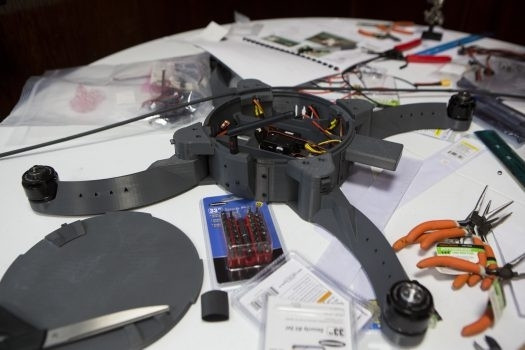US Marines develop 'Nibbler', a cheap, 3D-printed drone that can carry ammunition, drop small bombs
Nibbler is the Marine Corp's first 3D-printed drone and is expected to go into combat.

The US Marines have developed a small drone that can be assembled in six hours and can be used to carry out various tasks including airlifting ammunition.
It is the most recent in a long line of items that the US army is working on that involves 3D printing. The drone is called the "Nibbler" and could be used in combat, according to a post in the US Defence Department science blog.
Nibbler is seen as being cheap, portable, and easy to repair, and the post says that it can be customised to undertake a number of tasks including gathering intelligence and conducting surveillance while being controlled from either a smartphone or a dedicated controller.
A short video (below) even shows the Nibbler delivering ordnance or dropping a small bomb on a target.
The post also mentions that it could be autonomous, but it is not known whether it would be part of any AI-powered systems that the army is developing. The army is reported to be developing small drones working in a hive that could confuse enemy radar systems. The Nibbler could potentially be an apt candidate for this.
Nibbler takes around six hours to build, including assembly which involves wiring, soldering and final construction. It is not known when it would go into battle alongside the Marines.
Marines are making use of off-the-shelf tech in building machines that can be assembled with ease and possibly be repaired and modified to battlefield needs.
Previously, 3D printing, or additive manufacturing, was used to print out an entire barracks with the help of Nasa. A 30-ft-long craft that can transport trops was showcased. The Nibbler is next in a long line of 3D printed innovations that the army is undertaking.
Such technologies can reduce costs as well as the waiting time for spares by simply manufacturing locally as and when needed. John Burrow, deputy assistant secretary of the Navy for research, development, test and evaluation said: "It [3D printing] accelerates capability development and will increase our readiness by reducing obsolescence or long lead time issues."
© Copyright IBTimes 2025. All rights reserved.





















